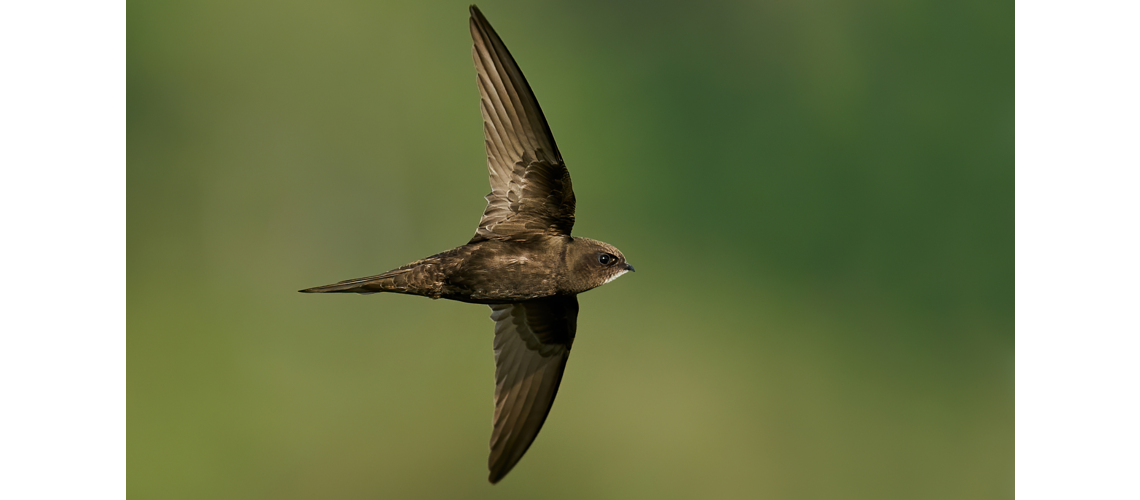Urgent action is needed for swifts, as Hampshire Swifts reports:
These beautiful and charismatic birds have declined across Hampshire and the UK by more than 50% over the past 23 years.
In fact, since 1993 they have declined by 60% across the UK and by 70% here in the south of England.
Swifts nest in our buildings, flying fast and straight to post themselves through small slots, into cavities in houses, behind roof tiles, eaves, fascia boards and soffits. Renovations and improved insulation measures (no bad things in themselves) can, often unwittingly, mean that nest sites are blocked or lost.
Swifts pair for life and are ‘site-faithful’, so if a building has been demolished, renovated, or the gap obstructed or repaired, they must find somewhere new and quickly. Swifts are only here for around three months, two of which are spent raising chicks - so if an alternative site can’t be found fast, a whole breeding season will be skipped.
Swifts can also be helped if specially designed swift nest bricks are incorporated into new builds and old buildings that are being renovated. Swift bricks can be made from different materials such as terracotta clay and recycled plastic, foamboard and brick, woodcrete or galvanised steel sheet. They can be made to any brick size to fit into any cavity or rendered wall, and can be plastered over, leaving just the entrance hole showing on the wall. Bricks have to be sited at least 5m above the ground with no vegetation on the wall and with a clear flight path to the entrance, but several can be built into the same wall. The Swift Conservation website has lots of useful information about suppliers and the installation of these swift bricks and there is now a British Standard for bird bricks which can be used by architects and developers.
Swifts are sociable birds and like to nest in colonies so it makes sense to provide at least one brick per house in a new development and where there are suitable walls, several can be placed together. They are inexpensive, need minimal maintenance are completely discrete from the interior of the building and do not affect the insulation. Although they are targeted at swifts, they are also called 'universal bird bricks' as they will probably first be used by house sparrows (also red-listed for conservation), tits and even starlings, before swifts come to claim them as their own.
So it seems a no-brainer that it should be a requirement in EHDC and SDNPA Local Plans (the government have not made it mandatory by law to install swift bricks and have left it to local authorities to decide) that every new development should have swift bricks incorporated into each and every suitable building to help build back the swift population of East Hampshire. Analyses of data collected in Winchester over the last few years shows how its swift population has risen due to the installation of multiple nest boxes. Read the report here.
By erecting swift boxes on our houses or integrating swift bricks into buildings we can offer alternative nesting sites and hopefully grow the Petersfield population of swifts.
Inspired by a Penns Road resident, this PeCAN project hopes to help Petersfield cultivate a bigger scream of swifts (the collective term), heading to Africa for the winter and returning in April and May, to grace the sky over our town for years to come. With small neighbourhood groups taking action across the whole of Petersfield we could become a model within the National Park, for creating Swift Streets.
In 2023 we hosted two oversubscribed and inspiring talks on swifts from Hampshire Swifts representative Catharine Gale. In April 2023, 21 swift boxes were installed in the Penns Road area, just a day before the first swifts were spotted in Petersfield! Since then 120 boxes have been installed in and around Petersfield under this scheme.
Read more about swifts on the Hampshire Swifts website, listen to a podcast here, and watch the RSPB's wonderful animation here:
Would you like to see more swifts in Petersfield? Then why not put up a swift box!
You can register your interest in a swift box below, and Hampshire Swifts will be in touch...
A note about siting requirements:
Swift boxes need to be fixed high up under the eaves of a building that is at least two storeys high. They need a clear drop below them of at least 4.5 metres as swifts often drop down a long way when leaving the box. For this reason, bungalows are rarely suitable for swift boxes. Due to their very short legs, swifts are unable to perch so must have ample clear air space adjacent to the box in order to fly straight in and out without obstruction. Trees, large shrubs, walls or fences too close to the swift box can obstruct their flight path. Climbing plants on a house wall can give rats access to swift boxes and obstruct the swifts' flight path so if they cover much of a wall, especially near the eaves, that wall might be unsuitable for a swift box.
To register your interest and receive more information please fill out the form below. We will share your enquiry with Hampshire Swifts who will check that your property is suitable and get back to you directly with installation arrangements.
The swift boxes are made and installed by the charity, with a single box costing £45 and a double box £85.
Have a look at this fantastic and heart-warming video from the RSPB, which shows how communities, developers and authorities can support Swifts by installing nest bricks and boxes:
Register for a swift box here

